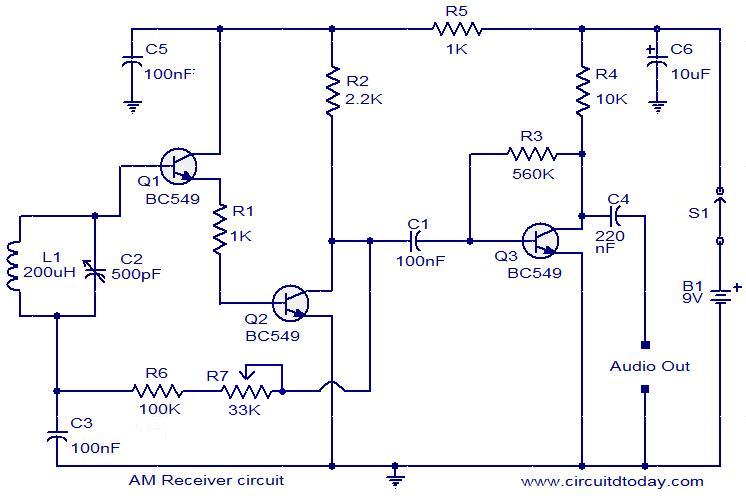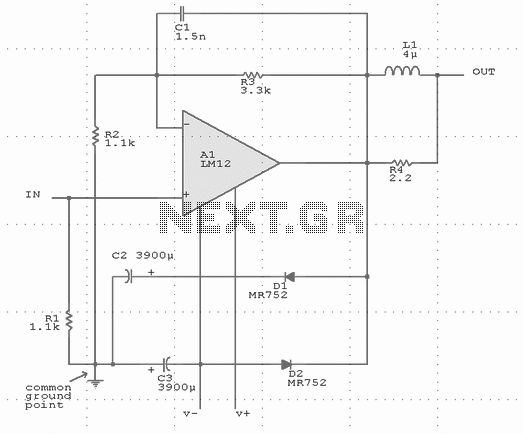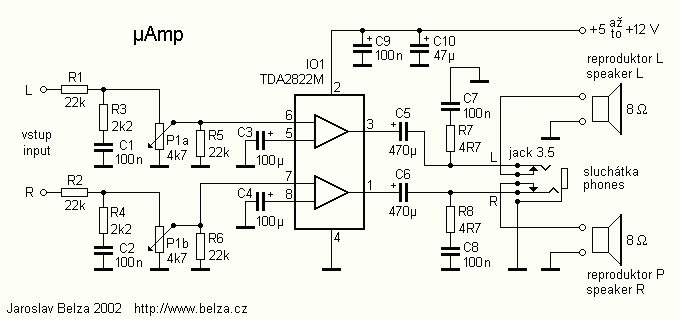
ASTABLE MULTIVIBRATOR USING OP AMP

This circuit is also known as a Free Running Oscillator because it does not require any trigger pulse to become active. Consider the moment when Vc equals +Vsat. At this point, the capacitor charges exponentially towards +Vsat through resistor R. As a result, Vd increases and eventually surpasses zero. This occurs when Vc reaches +2Vsat. At this instant, Vd becomes positive due to the continued charging of the capacitor, and the output switches to -Vsat. The capacitor then begins discharging to zero and subsequently recharges towards -Vsat. As this process continues, Vd decreases and crosses zero again when Vc reaches -2Vsat. At this moment, Vd becomes negative once more, and the output switches back to +Vsat. This sequence completes one cycle of output.
The Free Running Oscillator is a fundamental circuit used in various applications requiring periodic signals. It typically consists of a resistor (R), a capacitor (C), and an operational amplifier (op-amp) configured in a feedback loop. The operation begins with the capacitor charging through the resistor, which determines the time constant of the circuit. The charging phase continues until the voltage across the capacitor (Vc) reaches a threshold (in this case, +2Vsat), causing the output voltage (Vd) to switch states.
When Vd transitions to -Vsat, the capacitor discharges, leading to a decrease in Vc. This discharge phase continues until Vc falls to -2Vsat, at which point Vd again switches to +Vsat. The cycle then repeats, creating a square wave output. The frequency of oscillation can be adjusted by changing the values of the resistor and capacitor, allowing for flexibility in design.
This oscillator configuration is advantageous due to its simplicity and the absence of external triggering requirements. It can be used in applications such as clock generation, tone generation, and signal modulation, making it a versatile component in electronic design. The stability and frequency characteristics of the oscillator can be further refined through careful selection of components and circuit layout.This circuit is also called as Free Running Oscillator. Because, it doesn`t requires any trigger pulse to get active. Consider the instant at which Vc=+Vsat. Now the capacitor charges exponentially towards +Vsat through R. Automatically, Vd increases and crosses zero. This happens when Vc=+ ²Vsat. At the moment Vd becomes positive due to further charging of the capacitor. Output changes to -Vsat. Now capacitor starts discharging to zero and recharges towards -Vsat. Now Vd decreases and crosses zero. This happens when Vc=- ²Vsat. At the moment Vd becames negative again, output changes to +Vsat. This completes one cycle of output. 🔗 External reference
The Free Running Oscillator is a fundamental circuit used in various applications requiring periodic signals. It typically consists of a resistor (R), a capacitor (C), and an operational amplifier (op-amp) configured in a feedback loop. The operation begins with the capacitor charging through the resistor, which determines the time constant of the circuit. The charging phase continues until the voltage across the capacitor (Vc) reaches a threshold (in this case, +2Vsat), causing the output voltage (Vd) to switch states.
When Vd transitions to -Vsat, the capacitor discharges, leading to a decrease in Vc. This discharge phase continues until Vc falls to -2Vsat, at which point Vd again switches to +Vsat. The cycle then repeats, creating a square wave output. The frequency of oscillation can be adjusted by changing the values of the resistor and capacitor, allowing for flexibility in design.
This oscillator configuration is advantageous due to its simplicity and the absence of external triggering requirements. It can be used in applications such as clock generation, tone generation, and signal modulation, making it a versatile component in electronic design. The stability and frequency characteristics of the oscillator can be further refined through careful selection of components and circuit layout.This circuit is also called as Free Running Oscillator. Because, it doesn`t requires any trigger pulse to get active. Consider the instant at which Vc=+Vsat. Now the capacitor charges exponentially towards +Vsat through R. Automatically, Vd increases and crosses zero. This happens when Vc=+ ²Vsat. At the moment Vd becomes positive due to further charging of the capacitor. Output changes to -Vsat. Now capacitor starts discharging to zero and recharges towards -Vsat. Now Vd decreases and crosses zero. This happens when Vc=- ²Vsat. At the moment Vd becames negative again, output changes to +Vsat. This completes one cycle of output. 🔗 External reference





